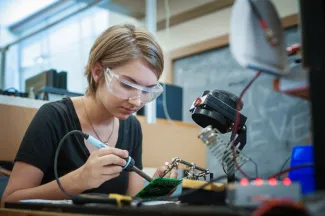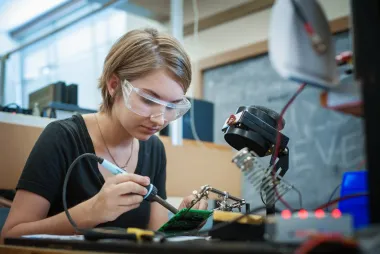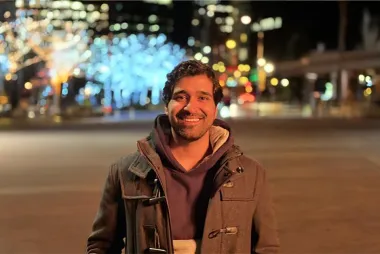Aditya Chaudhuri
- Degree: Bachelor of Applied Science
- Grad year: 2017
- Program:
- Campus: Okanagan
Job: Technical Advisor and Acting Deputy Director, Global Affairs Canada
On his LinkedIn profile, Aditya (Adi) Chaudhuri describes himself as an “engineer transforming the public sector.” Currently heading up a transformation initiative at Global Affairs Canada, Adi continues to explore the potential of an engineering career. Recognized as an Alberta Top 30 under 30 in 2018 for his contributions in the non-profit sector, Adi serves many organizations and causes, including leading the Calgary Professional Chapter of Engineers Without Borders. A lifelong student of Hindustani classical music, Adi is a professional artist and arts leader dedicated to bringing South Asian arts into the mainstream.
What were some of your highlights from undergrad?
I’m fortunate to have attended UBC and to have learned from such capable and qualified professors. They are stars! By bringing stories into each classroom discussion, weaving in real-life examples, and transforming theory into application, they made engineering fun and relevant. We weren’t just told to “do the math” – we learned why we needed to understand core concepts, and more importantly how to apply them in the real world. It inspired me to work hard because I knew what those equations could do and the impact they could have to make our world better.
The non-technical courses were also important. In our engineering communications course, for example, our professor equipped us with the skills and confidence to conduct stakeholder relations, describe technical and non-technical details, and communicate impacts to projects. In another example, our engineering leadership course professor consistently reminded us that we must see beyond the solution – we need to develop and apply our work and people skills to create open and inclusive teams.
Another highlight was my involvement in the Indigenous Centre where I tutored Indigenous engineering students. This was an unparalleled, impactful and rewarding experience. It also broadened my own knowledge and experiences – I went on trips to meet Elders, participated in smudging ceremonies and was even honoured with an Indigenous graduation ceremony. I still keep in touch with the students I worked with, and they have gone on to do incredible things.
You have a strong sense of purpose. Where did that come from?
Being part of Engineers Without Borders at UBC changed my life. It was inspiring as a student to sit in a room and talk with other engineering and non-engineering students about the impact of our work and explore important issues, including sustainability, food security and clean technologies. While most classrooms talked about building a bridge, we also talked about what it meant for the communities being connected by that bridge. I have brought this mindset into every work position and I continue to be involved with EWB – I currently lead Calgary’s professional chapter.
Any final reflections you want to share?
An engineering degree is just the starting point. I am not doing traditional engineering work right now and it’s hard to imagine that I or anyone else could’ve planned out or predicted my career path from electrical engineering grad to my current role.
My position requires both technical and non-technical skills, and engineering has set me up to be comfortable in both areas. Good engineers can do the math and have the conversation. They can design the bridge and be the bridge between people and groups.
This versatility is what makes engineering a superb degree. If you choose engineering, you will learn how to solve problems and will gain leadership and interpersonal skills. If you want to be a changemaker, engineering can certainly set you up to have that impact.




